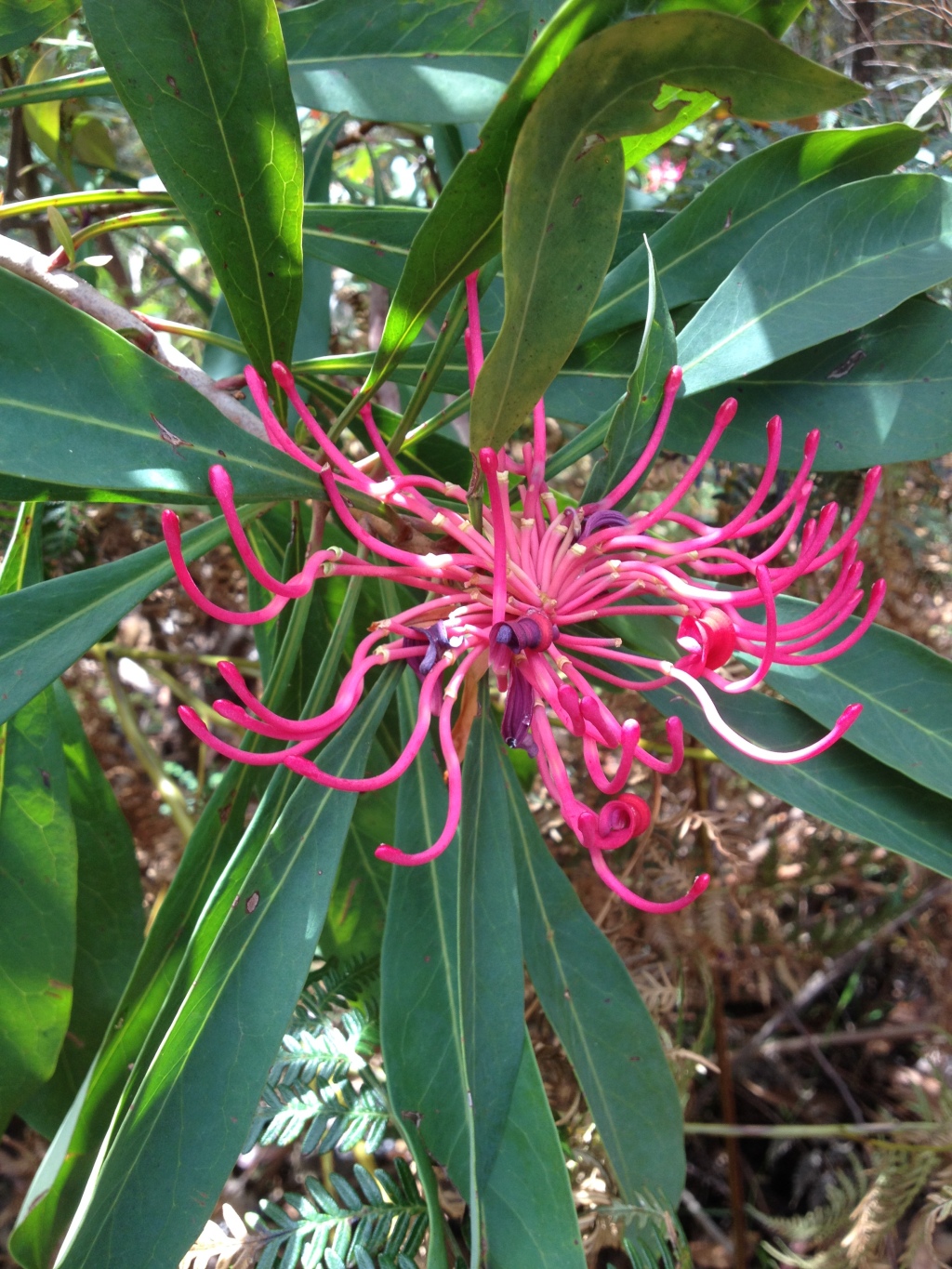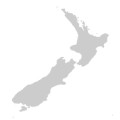Telopea oreades
F.Muell. Gippsland WaratahSlender much-branched shrub or tree to c. 12 m high, rarely taller, glabrous. Leaves narrowly obovate to oblanceolate, 10–30 cm long, 15–60 mm wide, dull dark green, surfaces granular when dried, venation most obvious on lower surface; apex broadly acute; margins entire; petiole 10–25 mm long. Inflorescence a compact, 30–60-flowered raceme or head, to c. 10 cm across; involucral bracts linear or lanceolate, mostly 2–5 cm long, pink, red or greenish, caducous; pedicels 10–20 mm long. Tepals 20–25 mm long, crimson, rarely white, glabrous. Follicle 5–7.5 cm long, excluding the persistent style, leathery, dark brown; seeds 10–16 per follicle, to c. 45 mm long including wing. Flowers Sep.–Dec.
VRiv, GipP, EGL, EGU, HNF, MonT, HFE. Also NSW. Occasional in wet sclerophyll forests and temperate rainforests east of c. Orbost, mainly montane (ascending to c. 1300 m on Mt Ellery), but occurring down to c. 200 m (e.g. at Lind National Park).
Jeanes, J.A. (1996). Proteaceae. In: Walsh, N.G.; Entwisle, T.J., Flora of Victoria Vol. 3, Dicotyledons Winteraceae to Myrtaceae, pp. 830–887. Inkata Press, Melbourne.
 Spinning
Spinning


